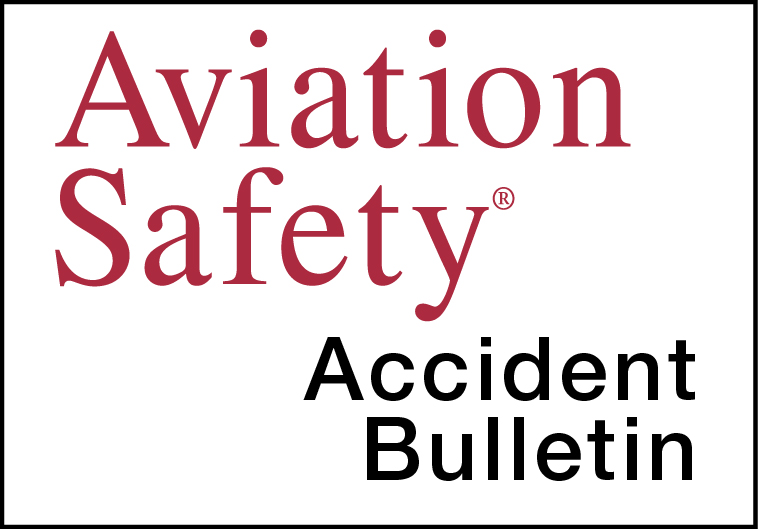AVweb’s General Aviation Accident Bulletin is taken from the pages of our sister publication, Aviation Safety magazine. All the reports listed here are preliminary and include only initial factual findings about crashes. You can learn more about the final probable cause on the NTSB’s website at www.ntsb.gov. Final reports appear about a year after the accident, although some take longer. Find out more about Aviation Safety at www.aviationsafetymagazine.com.
February 12, 2020, Broomfield, Colo.
Piaggio P.180 Avanti
At about 2115 Mountain time, the airplane went off the left side of the runway after landing. The private pilot and his three passengers were not injured. The airplane was substantially damaged. Night instrument conditions prevailed.
There was packed snow on the runway and moderate braking was reported. The approach was made at 130 knots (Vref +10), and the airplane touched down smoothly. As the nose wheel touched down, the airplane yawed to the left. Control inputs, including differential thrust and wheel braking, had no effect. The airplane departed the left side of the runway and the right wing tip and canard contacted the ground before the airplane came to a stop. Examination revealed both nose gear tires were deflated and the right main tire was low on air.
February 13, 2020, Bartow, Fla.
Mooney M20J 201
The airplane was substantially damaged when it impacted terrain at 1125 Eastern time while approaching to land. The private pilot and passenger were fatally injured. Visual conditions prevailed for the four-airplane formation flight.
A witness observed the airplanes lined up on final approach in trail of each other and saw the accident airplane (#4) approaching airplane #3 from the right at an angle. The accident airplane’s right wing “dipped severely attempting to avoid” airplane #3, followed by a steep left bank and then a vertical descent to the ground. He stated that the accident airplane was “closing in on airplane No. 3” and made a “sharp right turn to avoid a midair.” A second witness reported the accident airplane was “going faster than the others.” The pilot’s logbooks revealed 45 flight hours in the previous 90 days and 16 hours in the previous 30 days, three of which were in the accident airplane.
February 20, 2020, Coleman, Texas
Beech 200 Super King Air
At about 0600 Central time, the airplane impacted open ranchland. The pilot and two passengers were fatally injured, and the airplane was destroyed. Instrument conditions prevailed and an IFR flight plan had been filed.
During initial climb, the pilot reported to ATC that they had encountered freezing drizzle and light rime icing from 6400 feet to 8000 feet. As the airplane climbed through 11,600 feet, the pilot reported faulty deicing equipment and decided to return to the departure airport. The pilot remarked that they blew a circuit breaker when they encountered icing conditions, which was not resetting.
While receiving vectors for the ILS approach, the pilot reported faulty instruments. The airplane’s radar track appeared as a straight line before a right turn was observed. The turn radius decreased before the track disappeared. The wreckage path was aligned on a heading of 320 degrees and continued for about 570 feet.
February 22, 2020, Coldwater, Mich.
Rockwell Commander 114B
While passing through about 300 feet AGL on initial climb during a flight review, the flight instructor in the right seat reduced the throttle to idle to simulate an engine failure, expecting the pilot to make a gradual right turn to land mid-field on the intersecting runway. The pilot did not respond as expected, so the flight instructor assumed control, made the right turn and lowered the airplane’s nose. At about the same time, the pilot thought they were too low and advanced the throttle full forward. They felt the airplane shudder and experience an aerodynamic stall before impacting the ground. The airplane sustained substantial damage to the fuselage and both wings.
February 22, 2020, Rogers, Minn.
Beech A36 Bonanza
At about 1111 Central time, the airplane was destroyed when it impacted terrain; the pilot was fatally injured. Visual conditions prevailed.
According to ATC data, the airplane turned north after departing and climbed to 2000 feet MSL. While cruising at 170 knots groundspeed, the airplane climbed to 2300 feet and decelerated to 100 knots groundspeed. It then began a descending left turn to 190 degrees and descended on that heading for 30 seconds at 70 to 75 knots groundspeed. At 1100 feet MSL— about 200 feet AGL—the airplane turned right. The last ATC data recorded was at 1110:43, when the airplane was at 1000 feet MSL, with 72 knots groundspeed and a heading of 243 degrees.
A witness observed the airplane turning at low altitude. He noticed the airplane’s bank angle increase, followed by a rapid descent. The airplane impacted a forested area and a post-crash fire ensued. Flight control continuity was established for the ailerons, rudder and elevators. Examination of the engine was pending.
This article originally appeared in the May 2020 issue of Aviation Safety magazine.
For more great content like this, subscribe to Aviation Safety!
"general" - Google News
May 25, 2020 at 07:39PM
https://ift.tt/2MaLYdD
General Aviation Accident Bulletin - AVweb
"general" - Google News
https://ift.tt/2YopsF9
https://ift.tt/3faOei7
Bagikan Berita Ini















0 Response to "General Aviation Accident Bulletin - AVweb"
Post a Comment